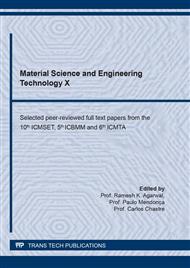p.258
p.267
p.275
p.281
p.288
p.297
p.303
p.309
p.315
The Degradation of Reinforced Concrete Bridge Elements
Abstract:
Concrete bridges are widely widespread as a main roadway infrastructure. The maintenance and the restoration or renewal of such artefacts are a major concern for the public administration. The reinforced concrete objects are exposed to detrimental atmospheric condition. The deterioration is different for the sixteen highway bridge elements. Some parts are sheltered or directly exposed to the atmospheric events, such as sun, rain, snow, salt spreading, splashing and washing. South-west sides or partially sheltered zones are more susceptible to cyclic temperature and humidity variation. This results in increased carbonation. The North-east sides, especially the curbs, are less carbonated because of enhanced presence of high humidity and are more prone to organic growth. The limit of 0.025 % of chloride content by concrete weight is exceeded in some bridge elements down to 40 mm, apart from the piles. Shoulders and curbs exhibit the highest Chloride content. Lower contents are observed for beams, struts and piles partially sheltered from the direct salt spreading action. A slight correlation exists between high Chloride content and low mean carbonation and depends on the humidity presence. This is observed for the shoulders, the shelves and the curbs, but less for the beams, the piles, the struts and the heads.
Info:
Periodical:
Pages:
288-296
Citation:
Online since:
February 2022
Authors:
Keywords:
Price:
Сopyright:
© 2022 Trans Tech Publications Ltd. All Rights Reserved
Share:
Citation:


